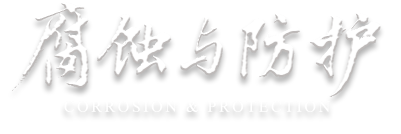Abstract:
The corrosion law of a high-strength steel at cathodic polarization potentials in deep-sea environment was studied by means of slow strain rate testing, electrochemical testing, weight loss testing and SEM observation. Some conclusions were drawn as follows: when the polarization potential applied to steel shifted negatively from -0.71 V (vs. Ag/AgCl) to -0.85 V (vs. Ag/AgCl), the corrosion rate decreased from 0.245 0 mm/a to 0.006 6 mm/a. The degree of protection for high-strength steel gradually increased in the potential range of -0.71 ~ -0.90 V (vs. Ag/AgCl), high-strength steel was mainly subjected to ductile fracture, while the potential was equal or less than -0.95 V (vs. Ag/AgCl), fracture morphology started to show typical hydrogen embrittlement, the high-strength steel entered the danger zone of hydrogen embrittlement. The optimal range of cathodic protection potential was determined to be in the range from -0.76 ~ -0.94 V (vs. Ag/AgCl).

 下载:
下载: